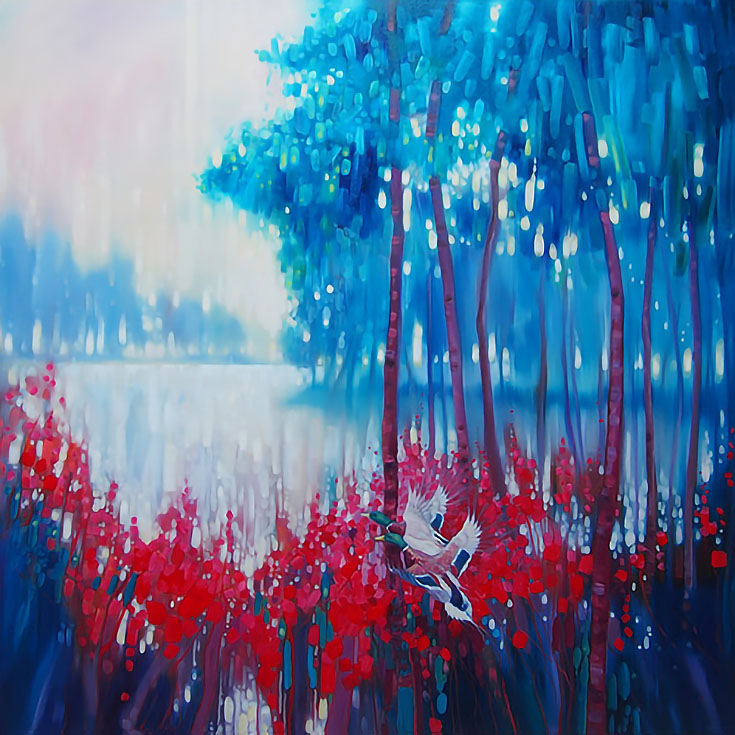Many artists are trying to find their inspiration, their “muse,” their creative influence, or their USP (unique selling point, in marketing terms). No matter what you call it, it will be distinctly different from person to person.
I was brought up in the London suburb of Bexleyheath and I hated it. I wanted the sea and fields and trees and I did not get this in Bexleyheath. Moving to Sussex was like finding a supermarket after 20 years starving in a desert. I needed space and I found plenty of it in the countryside and coastline of the south of England.
Moving was the first step to finding my muse.
I was painting for quite a while before I could start defining what my personal “muse” was though. I had to learn to draw accurately, paint traditional animal portraits, and try all sorts of mediums and techniques before I finally realised I did have a painting style.
This only became obvious to me around 10 years ago and it only happened once I had enough technical skills under my belt to feel confident enough to be more experimental.
Experimentation was step two in finding my muse.
I learned that I wanted to paint places and things that were a little bit mystical and that I could escape into. I wanted to experiment with art that was reminiscent of real places but with something else enchanting them a little. I wanted paintings that could lead me elsewhere entirely (along with anyone else who wanted to go there).
This quote by Mary Lou Cook (actress, humanitarian and artist) sums up well what I found to be true for myself:
“Creativity is inventing, experimenting, growing, taking risks, breaking rules, making mistakes, and having fun.” –Mary Lou Cook
I continued my experiments by using bigger canvases (so I would have more room to play about and try things out) and I began to walk regularly. I also became an absorber of my environment. By that I mean that whatever I see tends to lodge in my mind and I often have no idea what I have absorbed until I paint it, and see what I have observed.
My landscapes became largely painted from memory combined with imagination. They often start with a simple sketch with pleasing shapes in them but not much else. I like my landscapes to grow organically—just like a real landscape does.
Sometimes this goes horribly wrong. About 20% of my landscapes are so bad I have to paint over them and start again but that is no problem as it all adds to the ‘texture’ of the next painting (I pity the person who X-rays one of my paintings in 200 years’ time hoping to find a masterpiece as they will be very disappointed).
The third step of finding my muse is still in progress—it’s an ongoing evolution.
Art is about observing something or imagining it and then finding a way to present that viewpoint to others. Everyone can do this to some extent, but true artists keep evolving in how they present their viewpoints and how they present the message they wish to get across. If your art is not evolving, it is dying.
I am immensely grateful to online galleries for leveling the playing field for artists and for those who buy art. Today, anyone can make art—and you can find art anywhere. A big name artist can be found next to a 13 year old artist living in a slum in India and they have equal opportunity to sell their art which I think is fabulous.
I dedicate these ramblings to all those artists looking for their muse and all those art buyers who are helping artists to survive. Thank you!
To see the rest of Gill Bustamante’s original landscape paintings, or to read more from her blog, please visit www.gillbustamante.com
This post may contain affiliate links.



